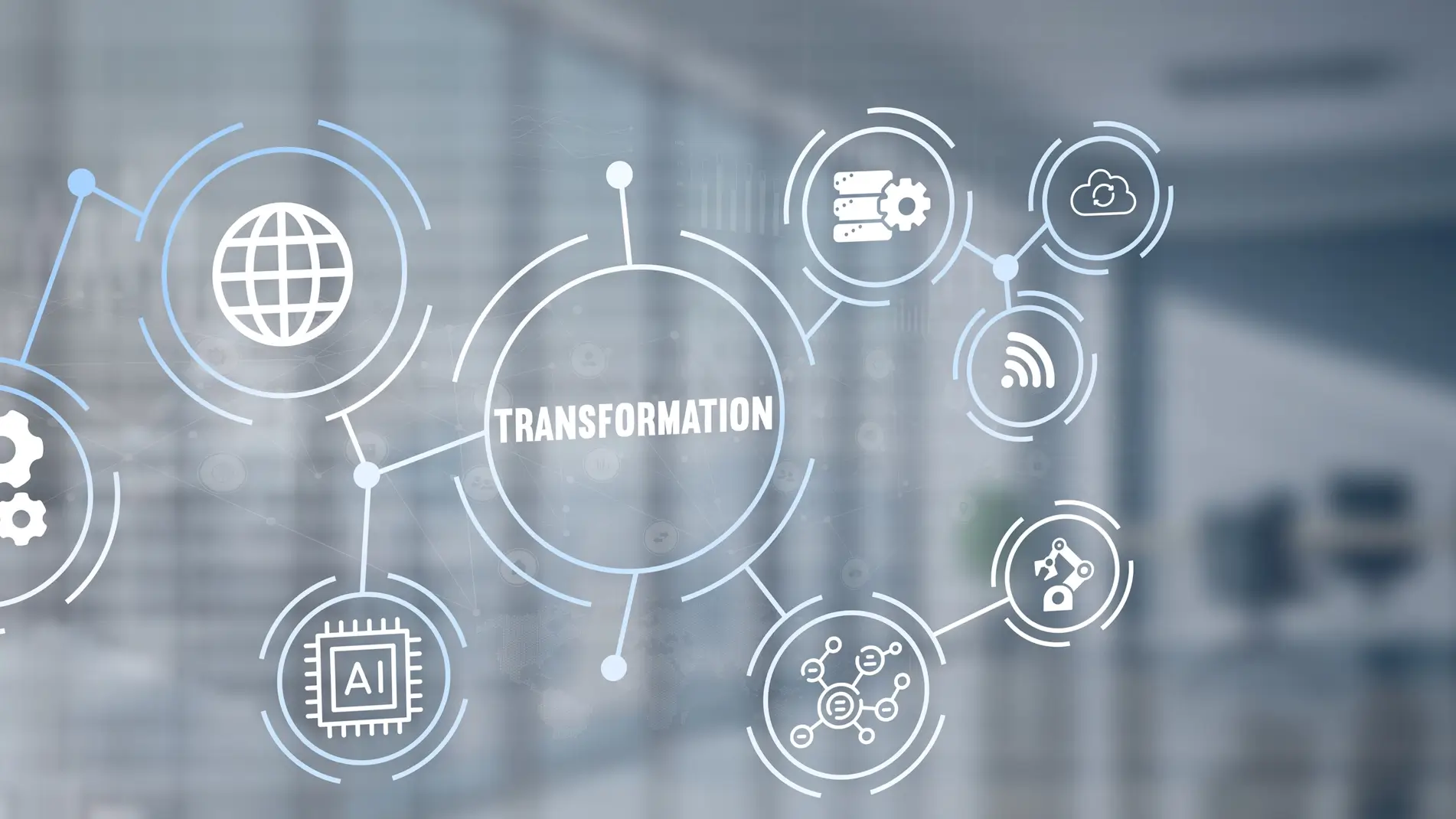Finding the Right Technical Architecture to Augment ERP with Advanced B2B Order Management
- May 20, 2025
- Manhattan Staff
- 7 minutes

In today's fast-evolving B2B commerce landscape, characterized by increasing complexity and elevated customer expectations, traditional ERP systems are facing significant challenges. While ERP systems excel in managing financials, procurement, and basic order workflows, they often lack the agility, intelligence, and customer-centric functionalities that modern B2B buyers demand.
As a result, many leading B2B organizations are adopting a new strategy: enhancing their ERP systems with advanced B2B order management solutions that operate alongside, rather than replace, these systems. For this approach to be effective, the technical architecture of the augmenting solution must be carefully designed.
This article delves into the key components of an effective architecture for a B2B order management system that enhances ERP systems. We will also identify five essential technical architecture characteristics contributing to a future-proof design.
Challenges Faced by ERP Systems in B2B Order Management
Modern B2B ordering and fulfillment processes are notably intricate. B2B buyers expect greater convenience, flexibility, and transparency throughout the ordering and fulfillment stages. They increasingly demand clear commitments regarding delivery timelines before placing orders and seek comprehensive tracking of their orders post-purchase. Such transparency is vital for companies to adequately prepare their operations and align their B2B orders with overarching business objectives.
Unlike B2C sectors, such as retail, where businesses have rapidly modernized systems to meet the rising consumer demands, including omnichannel fulfillment, B2B organizations have evolved more slowly. Many still rely heavily on ERP systems for sales order processing and inventory visibility.
Traditional ERP systems often feature rigid, monolithic architectures that fail to deliver the agile environment necessary for modern B2B commerce. These systems were primarily designed to manage financials, procurement, and basic inventory control rather than cater to the dynamic, customer-driven demands pervasive in today's market. Customizing these systems to meet modern requirements—like real-time inventory visibility, intelligent order routing, and personalized fulfillment options—can be risky, time-consuming, and costly. Such customization efforts may also jeopardize the stability of the ERP system, potentially disrupting critical financial and operational functions.
Compounding these challenges are B2B companies that operate multiple ERP systems across different regions or divisions. These disparate systems often result in siloed data sources and fragmented processes, leading to insufficient inventory visibility and inconsistent order transparency. This fragmentation can impede the ability to meet customer expectations regarding fulfillment preferences.
Modern B2B buyers seek an integrated approach that combines inventory and order fulfillment data across the entire buyer journey—from product discovery and order placement to post-order visibility and change control. The lack of orchestration in existing B2B order management processes can lead to complications for buyers; research by Gartner indicates that over 77% of B2B buyers found their last order experience overly complicated. However, there are viable solutions to streamline the B2B buying process, ultimately enhancing revenue growth and fostering customer loyalty.
The Case Against Simply Upgrading ERP Systems
A common query within B2B organizations is, "If our ERP is outdated, why not just upgrade it?" The answer is rarely straightforward. Upgrading an ERP system can be prohibitively expensive, disruptive, and time intensive. Even the latest ERP versions frequently lack the order management flexibility and responsiveness needed for dynamic B2B environments, particularly regarding aspects such as inventory visibility, real-time delivery date commitments, cost-efficient order routing, and buyer personalization.
Enterprise architects within B2B firms often hesitate to modify ERP systems due to such initiatives' complexities and high failure rates. According to Gartner, more than 70% of recently implemented ERP projects do not fully meet their initially set goals, with up to 25% experiencing catastrophic failures. This reality underscores the significant risks involved with extensive ERP modifications. The stakes are high since order management is a critical component for bolstering B2B revenue streams.
Instead of overhauling their core ERP systems, B2B companies may find it more beneficial to layer modern B2B order management capabilities on top of their existing ERP systems. This strategy not only enhances ordering and fulfillment operational capabilities but also preserves the investment already made in ERP infrastructure.
The Role of an ERP-Augmenting Order Management Solution
An augmenting modern B2B order management solution sits alongside a B2B company's ERP, acting as a unifying orchestration and decisioning layer for inventory visibility and optimization, delivery date promising, order fulfillment routing and processing, and post-order fulfillment visibility and control. It must integrate seamlessly with the ERP environment and other fulfillment support systems like warehouse management (WMS), transportation management (TMS), sales management and digital commerce while enabling real-time data exchange and automation across the order lifecycle.
This augmenting solution should not just support today's requirements but also enable future growth, flexibility, and innovation without re-engineering the ERP every time customer expectations shift.
Essential Capabilities of a Modern B2B Order Management System
An ERP-augmenting B2B modern order management solution enhances the B2B buying experiences and drives improved order fulfillment reliability and efficiency with these essential business capabilities:
A modern B2B order management solution focuses on filling functional gaps in ERP systems and carefully avoids encroaching on the ERP system's core capabilities. With this focus, the solution prevents functional duplication and complexity. For example, a modern B2B order management solution will add artificial intelligence powered order routing across ERP and other business systems, a capability not found in ERP systems.
B2B ordering and fulfillment is laden with complex business requirements. A modern B2B order management is optimized to manage these requirements, bringing significant value to B2B companies. For example, a modern B2B order management system is optimized to manage ordering for large orders with multiple line items, typically in the range of 30-to-300-line items. This system will provide unique functionality, such as allowing delivery date promises for each individual line item in a single order to optimize the ordering process, making it simpler, faster, and more value-adding.
To deliver precision and responsiveness, a modern B2B order management system equips a B2B company's business practitioners with robust configuration tools to dynamically tailor ordering rules and processes to the needs of B2B buyers. For example, such a solution empowers business practitioners to define rules and policies on the ordering changes allowed by order fulfillment stage and status, giving practitioners the flexibility to enhance the buying experience while protecting the integrity of order fulfillment.
At the heart of the modern B2B order management solution is a decision engine that leverages artificial intelligence to manage order routing, allocation, and exception handling dynamically. This engine must constantly evaluate changing variables in real-time across inventory availability, delivery constraints, and customer preferences, ensuring optimal fulfillment outcomes.
A modern B2B order management system is natively omnichannel, enabling B2B buyers to interact with fulfillment processes through web portals, mobile apps, and self-service tools. Of course, it also supports interactions through traditional sales and service channels. Regardless of the channel, it supports all interactions with consistent insights and logic into inventory, delivery promises, and order status—plus the ability to update preferences or change orders in flight.

The Architecture of an ERP-Augmenting Order Management Solution
An ERP-augmenting modern B2B order management follows the principles of composable architecture. A composable architecture refers to a modular, flexible design approach that allows B2B businesses to selectively build and evolve their enterprise technology stack by combining discrete, interoperable components—rather than relying on a single monolithic system.
For ERP environments, this means keeping the ERP as the core system of record (handling financials, procurement, HR, etc.) while integrating specialized, cloud-native applications—often via APIs—for functions like advanced order orchestration, inventory optimization, or ordering self-service. Each component, or "composable building blocks," can be deployed, scaled, and updated independently, allowing organizations to respond quickly to changing business needs without disrupting the ERP or larger IT ecosystem.
Key Characteristics of an ERP-Augmenting Technical Architecture
To ensure an ERP-augmenting B2B order management solution delivers immediate and long-term value, its technical architecture must be defined by the following five characteristics:
Modern B2B commerce demands agility and scale. A cloud-native architecture ensures continuous uptime, automatic scaling during peak periods, and access to the latest innovations through frequent, non-disruptive updates.
This architecture supports elastic resource allocation—meaning you can scale compute power, storage, and bandwidth based on demand, without costly infrastructure overhead.
Key Benefits:
- Reduced infrastructure management
- Faster time to value
- Built-in resilience and redundancy
Rather than a monolithic system, a proper architecture must be composable. The solution will be built using a microservices architecture, allowing each business capability (e.g., inventory visibility, delivery date promising, order routing) to operate independently. This approach supports modular deployment, rapid iteration, and horizontal scalability.
This modularity supports phased rollouts, faster testing cycles, and the ability to tailor the solution to specific business needs or maturity levels.
Key Benefits:
- Greater deployment flexibility
- Easier customization
- Faster feature adoption
To deliver precision and responsiveness, the architecture must support real-time, seamless data exchange with ERP, fulfillment systems, sales systems, and digital commerce front ends. Seamless integration requires RESTful APIs, pub/sub models, or middleware connections that allow asynchronous and synchronous communication across systems.
APIs should support read and write functions for orders, inventory, customer data, and fulfillment events, making the solution easy to plug into existing IT ecosystems.
Key Benefits:
- Real-time integration across systems
- Rapid onboarding of channels
- Future-proof data exchange
Advanced order management isn't just about automation—it's about optimization. The architecture must support AI and machine learning capabilities that allow for more intelligent decision-making: dynamically allocating inventory, forecasting delivery constraints, rebalancing orders, and identifying fulfillment risks before they escalate.
This intelligence should be embedded at key touchpoints across the ordering and fulfillment lifecycle, continuously learning from historical data and real-time conditions.
Key Benefits:
- Improved service levels
- Reduced fulfillment costs
- Predictive and proactive operations
Because the augmenting solution operates in tandem with core business systems, security and fault tolerance are paramount. The architecture must include enterprise-grade authentication, encryption, access control, and monitoring to protect sensitive business data and ensure operational continuity.
It should also be designed for high availability, with failover capabilities and performance monitoring built in.
Key Benefits:
- Business continuity
- Compliance with data standards
- Trust and reliability
Summing It Up
Augmenting your ERP with a modern B2B order management architecture is no longer a luxury—it's a strategic necessity. But to realize its full potential, the solution must be built on a solid, forward-looking technical foundation.
By embracing a cloud-native, API-first, intelligent, and resilient architecture, B2B companies can unlock the speed, precision, and agility they need to thrive in today's customer-driven B2B marketplace—without the cost, risk, or disruption of replacing their ERP systems.
In doing so, they don't just modernize order fulfillment—they future-proof it.
To learn more about this approach, visit: Add Modern B2B Promising & Fulfillment Capabilities to ERP
Related Assets

Elevating B2B Sales with Inventory & Delivery Availability
Discover how Manhattan Enterprise Promise & Fulfill™ enhances inventory and delivery-date availability during buyer ordering and fulfillment optimization to elevate sales.

Expand B2B Fulfillment Operational Excellence
Uncover how Manhattan Enterprise Promise & Fulfill™ expands fulfillment operational excellence with advanced order routing optimization, order consolidation, and automated
exception management.

Enhance B2B Buyer Experiences
Learn how Manhattan Enterprise Promise & Fulfill™ enhances B2B buyer experiences with flexible buyer preferences, comprehensive order fulfillment transparency, and buyer control of fulfillment.





